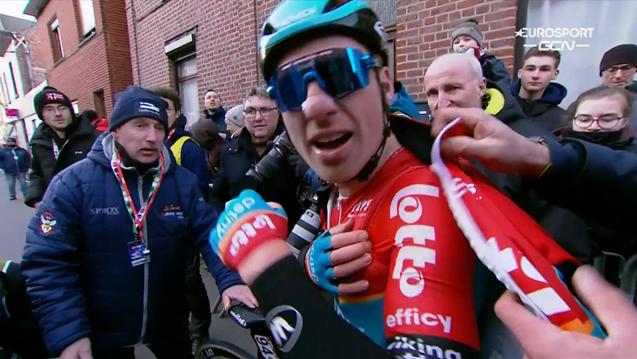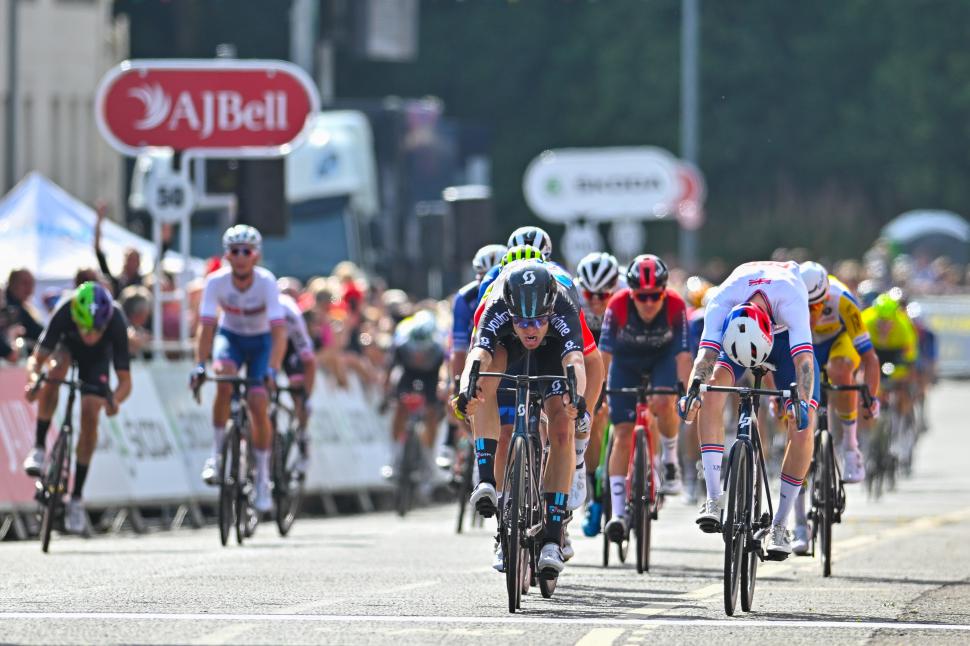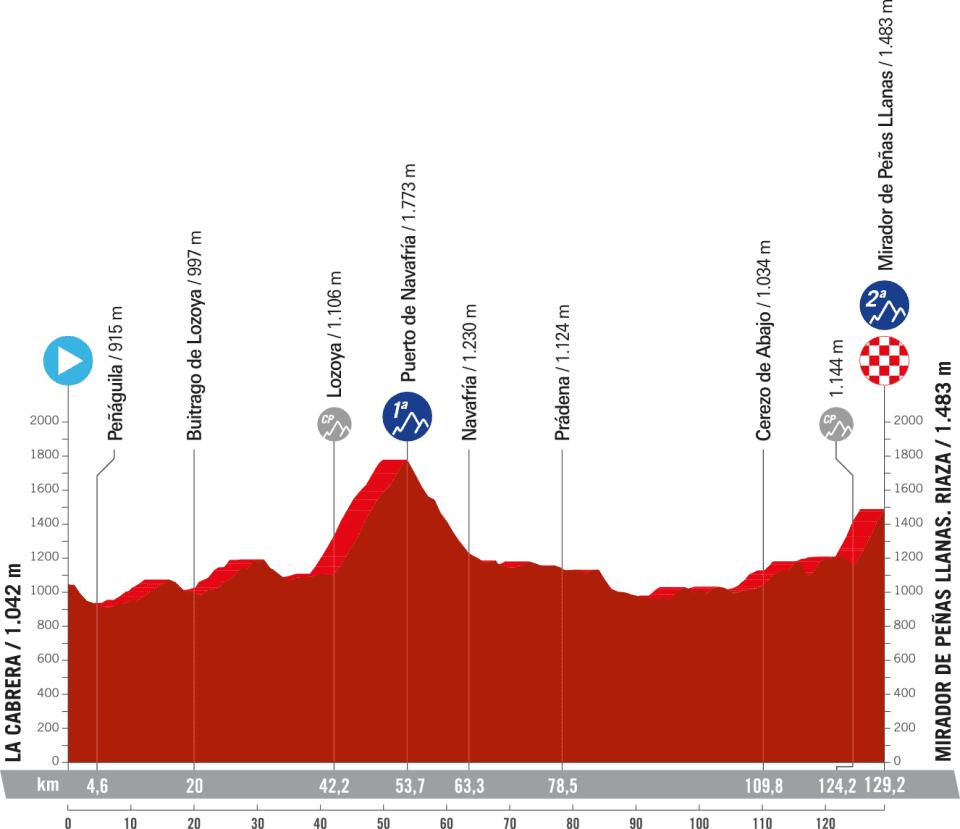- News
- Reviews
- Bikes
- Accessories
- Accessories - misc
- Computer mounts
- Bags
- Bar ends
- Bike bags & cases
- Bottle cages
- Bottles
- Cameras
- Car racks
- Child seats
- Computers
- Glasses
- GPS units
- Helmets
- Lights - front
- Lights - rear
- Lights - sets
- Locks
- Mirrors
- Mudguards
- Racks
- Pumps & CO2 inflators
- Puncture kits
- Reflectives
- Smart watches
- Stands and racks
- Trailers
- Clothing
- Components
- Bar tape & grips
- Bottom brackets
- Brake & gear cables
- Brake & STI levers
- Brake pads & spares
- Brakes
- Cassettes & freewheels
- Chains
- Chainsets & chainrings
- Derailleurs - front
- Derailleurs - rear
- Forks
- Gear levers & shifters
- Groupsets
- Handlebars & extensions
- Headsets
- Hubs
- Inner tubes
- Pedals
- Quick releases & skewers
- Saddles
- Seatposts
- Stems
- Wheels
- Tyres
- Health, fitness and nutrition
- Tools and workshop
- Miscellaneous
- Tubeless valves
- Buyers Guides
- Features
- Forum
- Recommends
- Podcast
news
Brazilian cyclist conquers brutal 38% ‘wall’; Belgian pro takes breakthrough win – and promptly dislocates shoulder celebrating; “Promises don’t save lives”: Family of killed cyclist sue NYC; Vuelta Femenina route finally announced + more on the live blog
SUMMARY
 Brazilian cyclist conquers brutal 38 percent ‘wall’ (Thiago Drews)
Brazilian cyclist conquers brutal 38 percent ‘wall’ (Thiago Drews)01 March 2023, 10:27
Brazilian cyclist conquers brutal 38 percent ‘wall’
Thiago Drews, known as Brazil’s most popular cycling influencer (aren’t we all cycling influencers, really?), has completed lots of distance challenges and stolen plenty of Strava KOMs over the years.
But even he was pretty chuffed with conquering Belo Horizonte’s absolutely brutal 38 percent Morro do Tunicão, and using a 40x51 to do so:
If you want to put Drews’ performance into perspective, here’s another video of someone attempting the infamous wall, featured on the blog last year:
Jenio, rs pic.twitter.com/YyvCeL0gEg
— País do Ciclismo (@opaisdociclismo) June 28, 2022
Though I reckon he has a long way to go before he matches this young fella’s style (who I have a tenner on to win the 2035 Tour de France):
I bet Victor Campenaerts is sitting at home in Belgium right now thinking, ‘I could do that with my 62-tooth chainring…’
01 March 2023, 16:55
01 March 2023, 16:12
Nans Peters wins sodden Trofeo Laigueglia with 30km solo attack
🏆 Après 30km d'échappée en solitaire sous une pluie battante, @NansPeters s'impose ! 💪🏼😍
🏆 After a 30km solo breakaway under a heavy rain, @NansPeters wins! 💪🏼😍#AG2RCITROËNTEAM #RoulonsAutrement #RideDifferently #MadeinTheAlps - © Getty pic.twitter.com/uGRV5AUzCN
— AG2R CITROËN TEAM (@AG2RCITROENTEAM) March 1, 2023
Now that Belgium’s Opening Weekend is out of the way, the cycling world’s attention turns to Italy, where the so-called ‘sixth monument’, Strade Bianche, will be contested on Saturday.
But before we get to Tuscany’s white roads, there was the not-so-simple matter of a ride through the rain-soaked Ligurian hills to test the peloton’s legs this afternoon.
In grim, rainy conditions, AG2R Citroën’s Nans Peters stormed to just the third win of his pro career, attacking on the second of four ascents of the steep Colla Micheri with 29km to go (a rough copy of his stage-winning attack at the 2020 Tour de France), before building an insurmountable lead on the local laps around Laigueglia, helped by the astute defensive tactics of teammates Benoît Cosnefroy and Andrea Vendrame behind.
#Replay 🎥 / #TrofeoLaigueglia 🇮🇹
La démonstration de 🇫🇷 Nans Peters (ACT) qui conclut parfaitement un beau boulot des coureurs d’Ag2r-Citroën. Une belle Masterclass.pic.twitter.com/V0OG7WRsoO— Renaud Breban (@RenaudB31) March 1, 2023
UAE Team Emirates’ Alessandro Covi tried to bridge across on the final climb, but could only manage third in the end, as Vendrame capped an impressive team display from AG2R by winning the sprint for second.
Now, call me selfish, but it would be just lovely if this weather kept up until Saturday…
01 March 2023, 15:27
New SRAM Force AXS first ride review — is it any good?
01 March 2023, 15:08
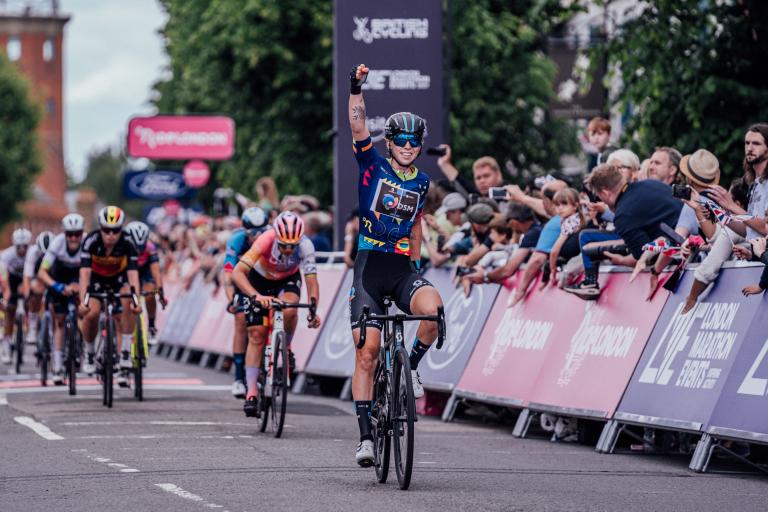
RideLondon Classique route announced
In more route announcement news, the 2023 edition of the RideLondon Classique – ahem, sorry, I mean the Ford RideLondon Classique (right, I said it once. Never again) – was unveiled today.
The race, which remains in the Women’s World Tour for 2023, will once again feature three stages, with two taking in the lanes of Essex before the final jaunt around London’s tourist hotspots.
All three stages, which will take place between Friday 26 and Sunday 28 May, will also be broadcast by the BBC, so hopefully we won’t have too much to complain about on the lack of coverage front.
Stage one will start in the medieval market town of Saffron Walden and cover 150km before a finish on Colchester’s East Hill. The second stage will then feature a 140km around Maldon, the host town of last year’s opening stage, before the final day’s spectator-friendly city centre circuit finishing on the Mall.
“The 2023 Ford RideLondon Classique will once again showcase both the beauty and history of Essex in the first two stages, before concluding with a stunning finale in the heart of London on some of the most famous streets in the world,” RideLondon Classique’s race director Scott Sunderland said in a statement.
Sprint supremo Lorena Wiebes dominated last year’s race, taking all three stages and the overall title. Odds on her repeating the clean sweep this year?
01 March 2023, 14:34
When the white roads turn brown: Is a muddy Strade Bianche on the cards?
Hmmm, Saturday could be interesting if this keeps up:
The often dry, sunny, white and idyllic scenery of the @StradeBianche is now… wet and muddy! 🤩
First recon ride on the ‘white roads’ of #StradeBianche for our team! 🇮🇹#FenixDeceuninck #Tuscany #Siena #Italy pic.twitter.com/NvxyH4K63z
— Fenix-Deceuninck Cycling Team (@FenixDeceuninck) March 1, 2023
I’m getting flashbacks to Cadel Evans, that mud-splattered rainbow jersey, and one of the greatest racing days of the 21st century…
01 March 2023, 13:50
“Paint is not protection. And promises don’t save lives”: Family of cyclist killed by truck driver on unprotected ‘sharrow’ sue New York City for $100 million
Gathered this morning to remember Sarah Schick, killed by a driver on 9th street. pic.twitter.com/rqrzsLltRF
— Nicholas Mancusi (@NicholasMancusi) January 20, 2023
The family of a cyclist killed after being struck by a truck driver on an unprotected portion of cycling infrastructure in New York – a section of road where five other cyclists have been killed in the past 18 years – are suing the city over what they claim was the municipal negligence which led to her death.
Sarah Schick, a 37-year-old mother of two, was riding on Ninth Street near Second Avenue in the Gowanus section of Brooklyn at around 7.20am on 10 January when she was hit and killed by the driver of a box truck. Schick was riding on a ‘sharrow’ – a shared lane for cyclists and motorists – at the time of the fatal collision.
In 2019, following a spate of cyclists’ deaths on the road in recent years, New York's Department of Transportation added segregated cycle lanes to much of Ninth Street – but left the area where Schick was struck unprotected.
Her death prompted protests from local cyclists, who staged a ‘die-in’ at the junction as part of a call for better and safer cycling infrastructure in the city.
Cyclists protested at the site where Sarah Schick was killed, and blocked traffic laying down in the intersection to demand safer streets.#bikes #brooklyn #cyclists #nyc #safety #Traffic pic.twitter.com/LuWMuwqHXZ
— Adrian (@ALChildress_) January 20, 2023
Speaking earlier this week, the cyclist’s lawyer Sam Davis said that extending the bike lanes would have prevented the 37-year-old’s death and that her family are now seeking “an enormous amount of compensation” because the city failed “to do what is their responsibility to do: that is to study what’s a safe street, to design it as a safe street, to bring it up to date to what the current needs are, to respond to the multiple fatalities and injuries and collisions.”
“This is what happens when a 26-foot box truck with a 6-foot cab that’s eight and a half feet wide is asked to navigate in a sharrow lane,” Davis said on Monday. “That leaves three feet or less room on that road.
“Sarah’s death will be the force that compels the City of New York to fix these lethal flaws.”
Schick’s husband, Maxime Le Munier, also called on New York to finally add proper protection for the entirety of Ninth Street.
“It’s unacceptable,” he said. “She died respecting every rule of the road, so the city needs to be safer for the cyclists. That particular intersection and many others across the city need to be made safer, and we don’t want to see another tragedy like this.”
Since Schick’s death, New York’s Department of Transport has committed to redesigning the unprotected section where the mother-of-two was struck – but Davis says mere promises are not good enough anymore.
He said: “Paint is not a protection. And promises don’t save lives. So what’s different this time?”
01 March 2023, 13:18
01 March 2023, 09:00
“I had to celebrate and shout ‘ouch’ at the same time”: Belgian pro takes breakthrough win – and promptly dislocates shoulder celebrating
Monday 28 February will certainly go down as a big day in the career of Milan Menten.
The 26-year-old Belgian, who joined Lotto Dstny this year from Bingoals Pauwels Sauces, overhauled Hugo Hofstetter on the deceptively difficult, draggy finish in Dour to win the cobbled semi-classic Le Samyn – only the third pro win of his career, and definitely the biggest so far.
🇧🇪 Milan Menten gets his first win for @lotto_dstny with a fantastic 𝒔𝒑𝒓𝒊𝒏𝒕 finish in Le Samyn as Kasper Asgreen 𝙘𝙧𝙖𝙨𝙝𝙚𝙨 out! 🥇 #LeSamyn | @MilanMenten pic.twitter.com/QWZhVnT51X
— Eurosport (@eurosport) February 28, 2023
And, just like Biniam Girmay’s podium prosecco debacle at last year’s Giro d’Italia, Menten followed his breakthrough victory by immediately injuring himself in the celebrations.
> Biniam Girmay out of Giro d’Italia with eye injury after bizarre podium prosecco incident
Menten’s post-win mishap was even more prompt than Girmay’s cork to the eye, however. As he crossed the line, he jabbed his left arm in the air – and dislocated his shoulder in the process.
At the finish, the Lotto Dstny rider told reporters that he, rather understandably, “cheered a bit too crazy” after sprinting to the win, causing his shoulder to dislocate.
“I braked with my other hand as quickly as possible and pushed everything into place,” he said. “I now know how to do that, because it has happened before.”
The 26-year-old, who told Sporza that his shoulder was “a bit stiff, still”, said that the injury forced him to “cheer and yell ‘ouch’ at the same time” as he crossed the line.
“But that took away the pain in the legs a bit,” he laughed.
Bike riders, eh?
01 March 2023, 12:55
Fun, fun, fun at the Trofeo Laigueglia
If you’re struggling through Wednesday, just remember – it could be worse. For example, you could be racing for Ineos in miserable conditions around a coastal town in northern Italy.
Good morning from #TrofeoLaigueglia 👋
We're just about to get under way in Italy with Michael, Brandon, Leo, Carlos and Kim. Good luck boys! pic.twitter.com/vqNOJiGOb3
— INEOS Grenadiers (@INEOSGrenadiers) March 1, 2023
Poor Kim Heiduk looks like he’s just sat down to seven emails from Karen in HR…
01 March 2023, 12:39
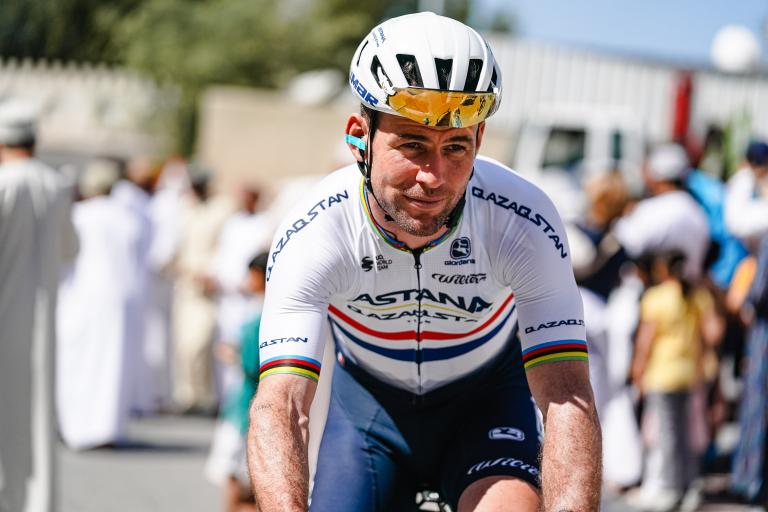
“We made some good steps”: Mark Cavendish’s leadout man Cees Bol believes sprinting duo are on road to Tour de France success
It was a turbulent winter for Mark Cavendish, punctuated by a prolonged transfer saga which saw the Manx Missile opt for a late, last-ditch move to Alexander Vinokourov’s Astana-Qazaqstan set-up.
But at last week’s UAE Tour, cycling’s greatest ever fast man was back where he belongs, sprinting for stage victories alongside the best in the world.
Accompanied by new leadout man Cees Bol – who was originally meant to follow Cavendish to the ill-fated B&B Hotels team, and has now ended up in the light blue colours of Astana as well – the British champion took an encouraging third place on the windswept opening stage to Al Mirfa, before finishing in the lower reaches of the top ten on two further stages.
A far cry from the lightning fast glory days of old, perhaps, but former DSM rider Bol reckons the signs in the UAE were encouraging as the team builds towards the Tour de France – and, of course, that elusive 35th stage win.
“It’s always a bit hard in the beginning, especially in this race when it’s super difficult to get a good leadout and we still need to get used to each other,” Bol told VeloNews after the UAE Tour.
“So that was a challenge this week, but I think we made some good steps.”
Cees Bol beats Jake Stewart on stage two of the 2022 Tour of Britain to Duns (Will Palmer/SWpix.com)
The 27-year-old Dutchman, who sprinted to stage wins at Paris-Nice and the Tour of Britain, as well as second on a Tour stage, while at DSM, believes that it will take time for Astana – used to riding for a GC leader in the mountains of grand tours – to gel and improve as a top-tier sprinting unit.
“You can train the physical effort you’ll make [for a leadout], but the chaos in the peloton, the timing and reading the race is something you can only learn in a race,” he said.
“I think we need a bit of coaching the guys in front of us to get us where we need to be in the last K. I think that’s a big thing. But just getting used to each other, like me knowing what he wants in a certain moment.
“Obviously, you can’t really talk it through at that moment. So, you have to learn it.”
Cavendish is back in action, and looking to get off the mark for 2023, at next week’s Tirreno-Adriatico, which may well prove a telling indicator of how much attention Astana’s riders are paying to their homework…
01 March 2023, 11:59
Cycling commentators and writers, take note…
For all the non-Danes out there: This is 🇩🇰 Mads Østergaard (Kristensen). Nobody ever uses his -sen surname, he goes by his middle name - as do virtually all other Danes with similar names. #LeSamyn #saiklist https://t.co/GeNjk9Anmy
— ˈsaɪ.klɪst 💙💛 (@saiklist_help) February 28, 2023
01 March 2023, 11:35

Cyclocross star Puck Pieterse set for World Tour debut at Strade Bianche
Joining the increasingly long list of cyclocross stars striking fear into the hearts of every roadie is Puck Pieterse, whose world class bike handling skills will certainly come in handy when she lines up in Siena on Saturday to take on the gravel roads of Strade Bianche, her first ever World Tour race.
The 20-year-old Fenix-Deceuninck rider was, along with world champion Fem van Empel, the standout performer of the cyclocross season this winter, taking nine victories and never finishing off the podium.
(Alex Whitehead/SWpix.com)
Pieterse made her long-awaited debut on the road at Sunday’s Omloop van het Hageland, where she put in a number of attacks before eventually finishing 36th, two minutes down on winner Lorena Wiebes.
It is currently unclear how much focus the 20-year-old wunderkind will pay to the road, as she will look to certainly build on her growing reputation on the ‘cross field while also attempting to qualify for the mountain bike race at next summer’s Olympic Games.
But the gravel roads of Tuscany have been kind to cyclocrossers in the past – just ask Mathieu, Wout, and Zdeněk – so it’ll be interesting to see how one of the sport’s most exciting talents fares in her first race in the big leagues.
01 March 2023, 11:14
01 March 2023, 10:59
“Didn’t we leave the Europe?” Terrible but very funny anti-cycling rants, part 603
"Didn't we leave the Europe"
This must be a parody right? pic.twitter.com/SYTlekAPVY
— Harry Gray (@HarryHamishGray) February 28, 2023
“This isn’t Holland. So why are we adopting all this European… you know, weirdness?”
Hard to argue with that…
01 March 2023, 09:38

La Vuelta Femenina route, and Lagos de Covadonga finish, finally announced – just two months before first stage
In exactly two months’ time, Annemiek van Vleuten and co will be preparing for the opening stage of the inaugural La Vuelta Femenina, the third and final of the traditional major tours of Spain, Italy, and France to be tackled by the women’s peloton.
Like the Tour de France Femmes, the women’s Tour of Spain emerged from a smaller, tacked-on affair, the one-day Challenge by La Vuelta. With the race slowly growing in size over the past few years, eventually morphing into 2022’s five-day affair – and, following the massive popularity of last year’s relaunched Tour de France – it made sense for the women’s Vuelta to become a proper, week-long stage race befitting its name.
And, whole it’s been a long, long wait for the women’s peloton to be able to properly race all three grand tours, it’s felt like an even longer wait for the Vuelta’s route details to be announced.
“For me, there is only one grand tour that respects the women,” FDJ-Suez’s manager Stephen Delcourt, alluding to the announcement of the 2023 Tour route in October, said last month.
“At this date, we have no stage details of the Giro and the Vuelta. We start the Vuelta the first week of May. We don’t know. We have only rumours about the details. If we want to respect the girls and say we invest in women’s cycling, they need to respect this part.”
But, finally, yesterday evening – just over two months before the opening stage – the 2023 Vuelta route was finally announced.
And, to be fair, good things come to those who wait, as the seven-stage race looks set to be a cracker.
😍 El mapa de La Vuelta Femenina by https://t.co/7WuIYU1Pvi 😍
😍 Here's the official route of #LaVueltaFemenina! 😍 pic.twitter.com/kVERtCAEWZ
— La Vuelta Femenina by Carrefour.es (@LaVueltaFem) February 28, 2023
The Vuelta will kick off on 1 May with a 14.5km team time trial (hooray, a TTT!) in Torrevieja, before three largely flat days will take the peloton north to the mountains around Madrid, for a crucial double climb day culminating in a 5km climb to the summit of Mirador de Peñas Llanas.
The organisers also revealed that stage five’s Cat One Puerto de Navafría – the highest point of the race – will feature a prize awarded to the first rider to the summit in memory of 18-year-old Estella Domínguez, who was killed in a hit-and-run incident while training last month.
Another grippy stage follows, before the final, and decisive, mountain stage, finishing on arguably the Vuelta’s most iconic climb, the brutal 14km Lagos de Covadonga.
Spain’s answer to Alpe d’Huez, Lagos de Covadonga was first used by the Vuelta forty years ago in 1983, when eventual GC winner Bernard Hinault battled with Marino Lejaretta on its savage slopes, which swiftly established themselves in the race’s folklore.
Since then, the lakes have been conquered by the likes of Pedro Delgado, Robert Millar, Lucho Herrera, Nairo Quintana, Thibaut Pinot, and, most recently, Primož Roglič.
Annemiek van Vleuten, who will be looking to add her name to that illustrious list in May, praised the organisers for including Lagos de Covadonga, a climb synonymous with the men’s Vuelta, in the first ever women’s Tour of Spain.
“To end in such a famous location is essential for the race’s media impact as it results in more coverage for the event,” she said last night. “I’m glad La Vuelta Femenina by Carrefour.es has chosen such as well-known climb.
“I’m excited, I know what to expect, it’s a very tough climb. It’s also good that we have some flat stages, as they also help to make the race very exciting. It’s a very complete Vuelta.”
And at least we won’t have too long to wait for the race itself…
After obtaining a PhD, lecturing, and hosting a history podcast at Queen’s University Belfast, Ryan joined road.cc in December 2021 and since then has kept the site’s readers and listeners informed and enthralled (well at least occasionally) on news, the live blog, and the road.cc Podcast. After boarding a wrong bus at the world championships and ruining a good pair of jeans at the cyclocross, he now serves as road.cc’s senior news writer. Before his foray into cycling journalism, he wallowed in the equally pitiless world of academia, where he wrote a book about Victorian politics and droned on about cycling and bikes to classes of bored students (while taking every chance he could get to talk about cycling in print or on the radio). He can be found riding his bike very slowly around the narrow, scenic country lanes of Co. Down.
Add new comment
16 comments

PRSboy
|
1 year ago
7 likes
That 38% climb really is something. There is a very steep climb on the Thames path (next to a flight of stairs cut into the path!) which I've tried numerous times, even with a good run-up from a steep descent just before it. Last time I ended up hopping backwards with one foot still clipped in, then fell off sideways into a bramble bush and decided I'd not try again.

If it's the one I'm thinking of, it's between Goring and Whitchurch on Thames.
The map says Hartslock wood. Huge dip.
First time I went down the stepped side (coming from Reading) I had to bail out, rather gently, I felt an oncoming disaster.
The other side of the dip is fun to go down and alright to go up. I tend to walk the steps, it tends to be toward the end of a longish ride and the almost home bit.
Beyond Whitchurch (going towards Reading) there is an excellent very organic Veg Shack just before Hardwick Stud Farm. Lin's VegShed.


Awavey
|
1 year ago
0 likes
Maybe prompted by La Vuelta Femenina course reveal, i believe Womens Tour is due this month as well, Ride London have published details for the Classique, including a hilltop finish up East Hill in Colchester  https://www.ridelondon.co.uk/news-and-media/latest-news/three-stages-of-...
https://www.ridelondon.co.uk/news-and-media/latest-news/three-stages-of-...

Awavey
|
1 year ago
3 likes
Cyclist killed in crash in Norwich https://www.eveningnews24.co.uk/news/23351372.cyclist-dies-norwich-crash...

Another cyclist killed in Norfolk https://www.edp24.co.uk/news/23356263.man-arrested-cyclist-dies-crash-wa...

Shelders
|
1 year ago
4 likes
https://www.bbc.co.uk/news/uk-england-cambridgeshire-64796295
Another in the classic hi-vis always works category


Steve K
|
1 year ago
0 likes
That story reminds me of a friend of mine dislocating his shoulder celebrating a last minute goal at Crystal Palace. Our mutual friend - who was sat between us - interupted my celebrations to send me to medical help. By the time I was trying to come back with the St John's Ambulance people, the final whistle had gone and we couldn't get to him because of everyone leaving. When we eventually did, his arm had popped back in.
That story reminds me of a friend of mine dislocating his shoulder celebrating a last minute goal at Crystal Palace. Our mutual friend - who was sat between us - interupted my celebrations to send me to medical help. By the time I was trying to come back with the St John's Ambulance people, the final whistle had gone and we couldn't get to him because of everyone leaving. When we eventually did, his arm had popped back in.
I've heard that being a Palace fan can be painful at times.
That story reminds me of a friend of mine dislocating his shoulder celebrating a last minute goal at Crystal Palace. Our mutual friend - who was sat between us - interupted my celebrations to send me to medical help. By the time I was trying to come back with the St John's Ambulance people, the final whistle had gone and we couldn't get to him because of everyone leaving. When we eventually did, his arm had popped back in.
Lucky bugger!
I'd take a dislocated shoulder just for the chance of seeing my team score.
Been to 4 away matches so far this season, 6-0 defeat at Man City, 5-0 at Arsenal, 3-0 at Man Utd and last weekends abysmal 4-0 implosion at West Ham.
18 goals conceded, 0 scored. I'll try whacking my shoulder out next match, see if that brings any kind of luck.
We've managed to score a whole 3 goals more than you this season, so there's not much in it overall. But that's probably enough football.
Although, what the hell, I'm cycling to Villa this weekend in aid of the Palace for Life Foundation, in case anyone can spare a couple of quid. https://justgiving.com/fundraising/stevekingdom
Latest Comments
- Rendel Harris 29 min 20 sec ago
I've always leaned towards race bikes but did a fair amount of touring in my time; friends of my generation (mid 50s (in age not decade)) who were...
- Nighttrain123 2 hours 3 min ago
Same on the TPT. They feel it's their right to dominate all spaces. Strictly, they should never block the path where it's wider than single-track.
- Nighttrain123 2 hours 26 min ago
As a community, we should probably abandon the category 'e-bike' because it has no legal definition and is too broad....
- hawkinspeter 2 hours 31 min ago
That's strange - usually a vociferous backlash means that quite a few people are taking offense to it and that you should think about why that is....
- Boopop 4 hours 17 min ago
This feels a bit like chopping down trees to make way for a cycle track, I can't tell what to make of it. As we've seen on this site, house owners...
- stonojnr 6 hours 25 min ago
surprised they didnt blame the council for not gritting the road
- chrisonabike 7 hours 16 min ago
EDIT - I wonder if this is coming from the realisation of "we can't drive through quickly now - because of those *other drivers*"? If so is it...
- RayG 12 hours 49 min ago
I've got the 900 lumen version of the front light. Even when the cam lever is closed properly, it doesn't grip the light well. The first one let...


